11 Best Cold-Weather Winterized RVs For Extreme Cold 2024
![11 Best Cold-Weather Winterized RVs For Extreme Cold [currentyear] Cold Weather Winterized RVs FI](https://topnotchoutdoor.com/wp-content/uploads/2021/07/Cold-Weather-Winterized-RVs-FI.webp)
Share this article:
TopNotch Outdoor is independent – we research, test, and rate the top products to help you make the right buying choice. We sometimes use affiliate links and may receive a small commission on your purchase. Learn more…
Looking for a Winterised RV so you can camp in all four seasons and still stay cozy?
How can you prepare yourself for an extreme cold-weather road trip without breaking the bank?
The answer is simple – get a fully winterized RV.
In this article, we’re going to be checking out:
Let’s face it; not ALL RVs are made to withstand extreme cold weather, so your only solution would be to find one that includes insulation and heat sources not only for your comfort but your travel companions, too.
Think about it:
Having a travel trailer with a water heater, a heat duct system, a holding tank, fresh water, and good temperature maintenance – sounds like one of the best ways to enjoy your camping trips, yes?
So, if you’re on the hunt for a travel trailer like this – you’ve come to the right place.
Here are 12 of the best cold weather RVs worth considering.
12 Best Cold-Weather RVs For Extreme Cold
Windjammer 3008W Travel Trailer
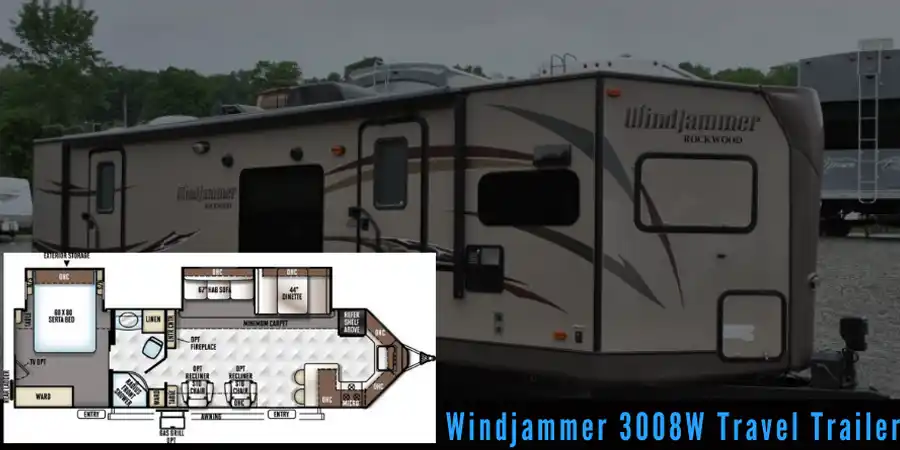
Overview:
Travel trailers are ideal for beginners still getting used to the RV life, and the Windjammer 3008W Travel Trailer won’t disappoint.
With room for up to five beds, you can feel free to bring your best friends or family.
With a 7,482-pound ship weight and an 897-pound hitch weight, this trailer is not exactly lightweight, but it will keep you toasty.
Its large size lends itself space for a black water tank that can hold as much as 45 gallons as well as a gray water tank with a 75-gallon capacity and a freshwater tank with a 45-gallon capacity.
Other notable features are the two slides, wardrobe in the master bedroom space, linen closet, 44-inch dinette space, oven with microwave hookups, gas grill connector, and outdoor awning. There’s even a collapsible table in the master bedroom, which has room for a bed that measures 60×10.
Key Features:
Pros
Cons
Jayco Redhawk 26XD
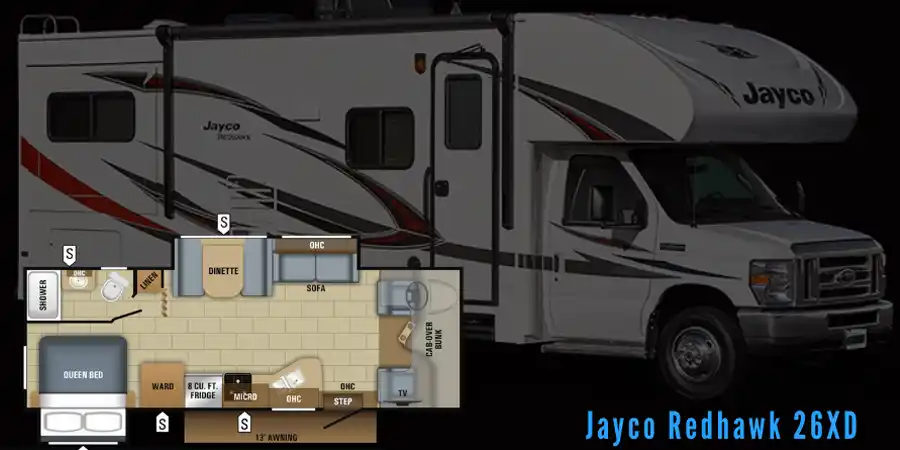
Overview:
The beauty and warmth of the Jayco Redhawk 26XD know no bounds, especially if you get a newer model like a 2017 or 2018 one.
Those models of the Redhawk have up to five floor plans available. All of them feature a Ford chassis, linen closets, an eight cubic-foot refrigerator, a 13-foot awning, and a walk-around queen bed.
Key Features:
Pros
Cons
Related:
Average RV Costs
11 Best Small Motorhomes
Average Camper Weight
Lance 4 Seasons Travel Trailer
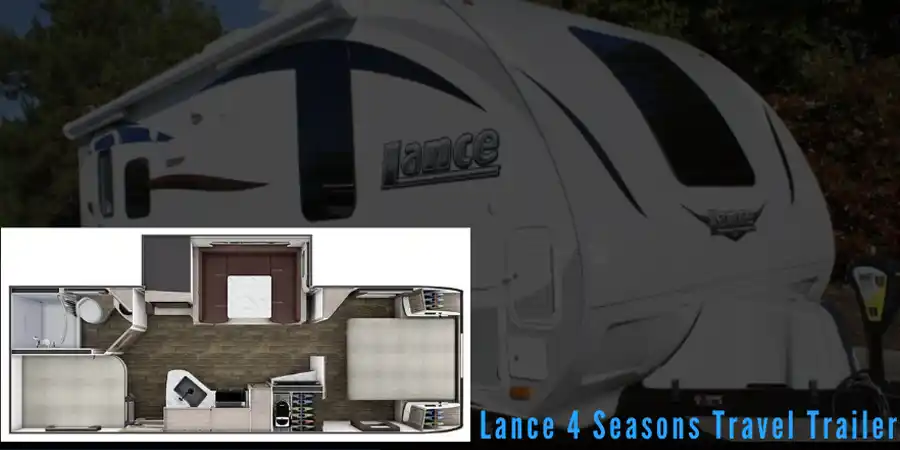
Overview:
Certified for both warm-weather and cold-weather driving, the Lance 4 Seasons Travel Trailer is another awesome choice for wintertime journeys. Here’s an overview of its seasonal features:
Key Features:
Pros
Cons
Forest River Arctic Wolf
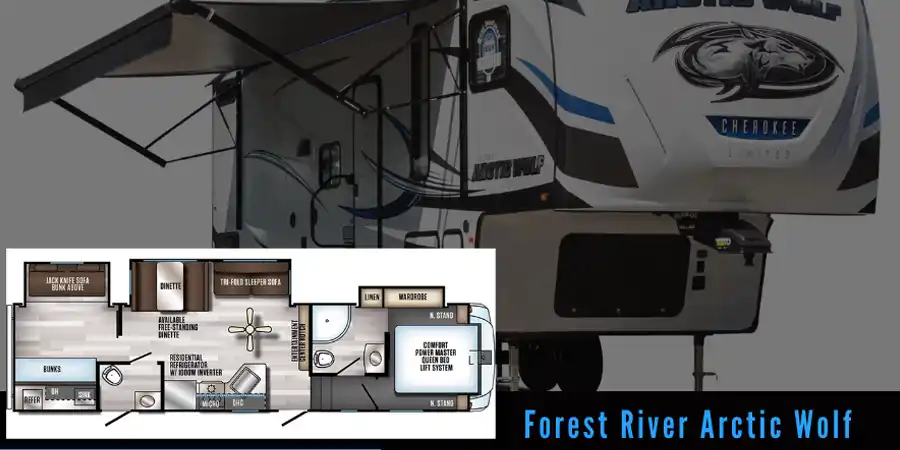
Overview:
With six floorplan options, the Arctic Wolf from Forest River fits most RV enthusiasts’ needs. The biggest model weighs more than 10,000 pounds, with a hitch weight of 1,452 pounds at most.
These vehicles also have a max width of 35 feet and a max height of 11 feet.
Moving on to the features, you can either choose the Arctic Package or the Extreme Weather Package for your wintertime adventures.
Let’s unpack them both.
Key Features:
Arctic Package
Extreme Weather Package
Pros
Cons
Jayco 327CKTS Eagle
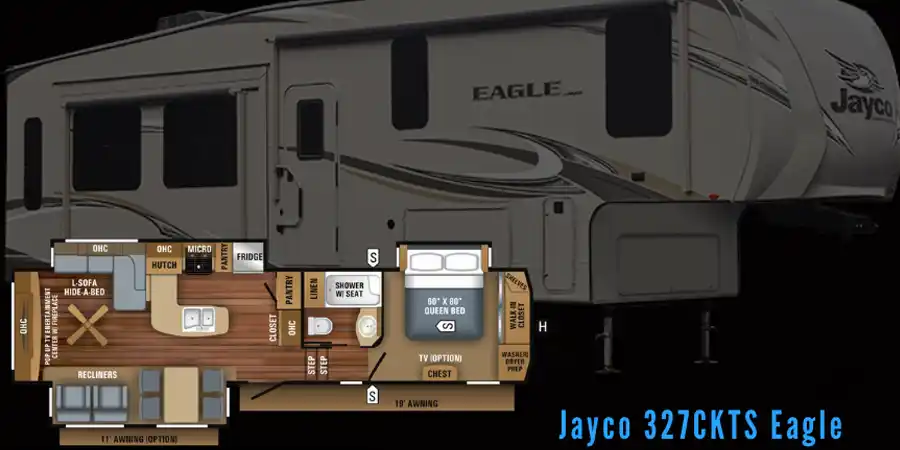
Overview:
Another great Jayco cold weather RV is the 327CKTS Eagle, which I’ll call Eagle for short. The latest model, new for 2018, includes a 21-cubic foot refrigerator, a 60”x80” queen bed, walk-in closets with shelving, a washer and dryer, and a TV chest.
You’ll also get a 19-foot outdoor awning, a full bathroom (with a shower, toilet, sink, and linen closet), steps, a kitchen hutch with a second sink and closet space, an L-shaped sofa, and extra recliners.
Want more?
You can choose from interior décor packages that will make this RV feel just like home. There are also these optional features:
Key Features:
Pros
Cons
Heartland Bighorn
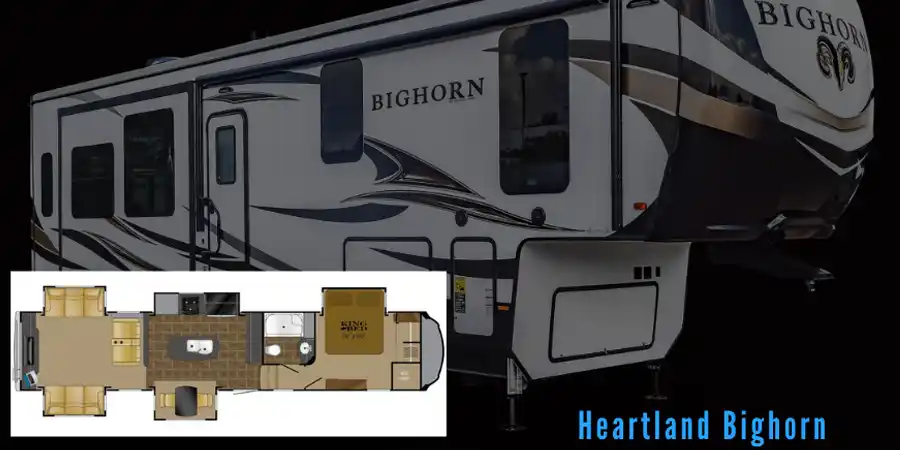
Overview:
This won’t be the first Heartland RV featured on this list, and for a good reason.
This is one of the top manufacturers of all-weather vehicles, and the Bighorn lives up to the hype. This camper trailer has nearly a dozen floorplans (yes, you read that right), so no matter what your budget or space limitations are, you should be able to find a Bighorn that fits your needs.
The sizing of these units varies, with the biggest being more than 14,000 pounds (dry weight), a hitch weight of nearly 3,000 pounds, and a length of almost 45 feet.
Most floorplans include the following toasty features:
Key Features:
Pros
Cons
Keystone Raptor
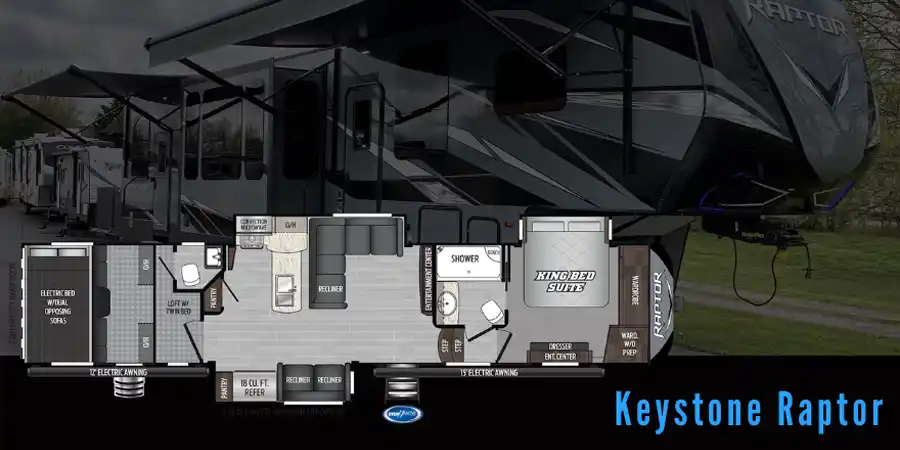
Overview:
Yet another camper trailer of note is the Keystone Raptor. All the same features you expect from the Keystone brand, such as a fantastic arctic package, are also here along with some extras.
For instance…
… there are eight floor plans for the Raptor to choose from. You’ll get the same rooms, like the bedroom, bathroom, and kitchen, as well as handy storage space, but each one is arranged somewhat differently.
The MaxFlo zone-controlled air conditioner runs at 15,000 BTUs and is one of the standout cold-weather features.
Key Features:
Pros
Cons
Heartland LM Arlington
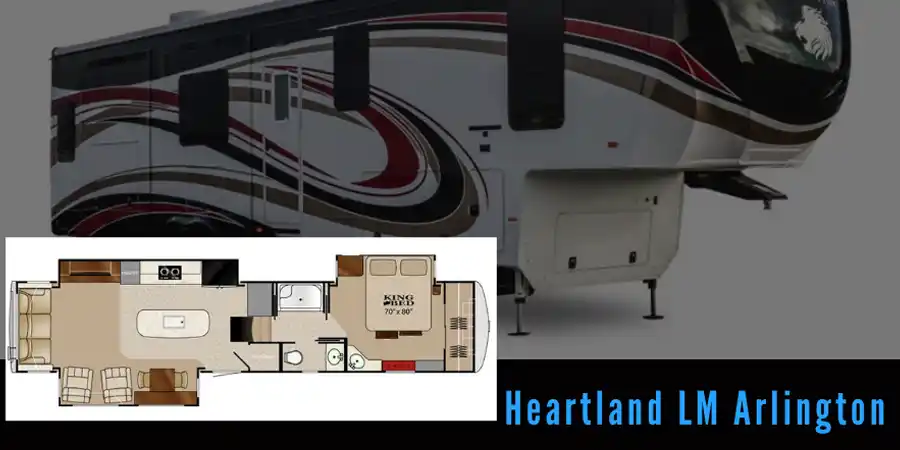
Overview:
The Heartland LM Arlington comes equipped with the Yeti Extreme Cold Weather Package, one of the most popular arctic packages out there. Of course, this feature is optional, but it’s not one you’re going to want to skip.
Not only that, but with home and away packages, your vehicle will be in stellar shape no matter how often you drive it. Here are some of the features that come standard with the core package:
Key Features:
Pros
Cons
Northwood Arctic Fox
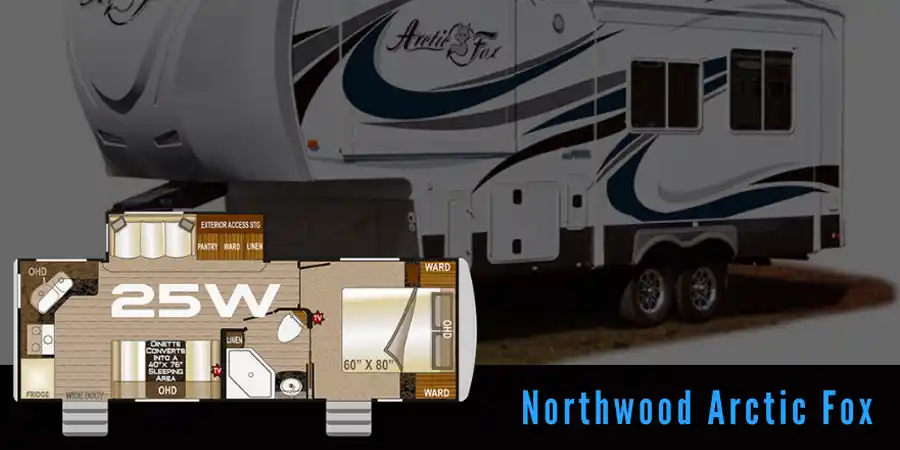
Overview:
Few cold-weather campers are as beloved as the Arctic Fox from Northwood. That’s with good reason, too: this baby is loaded with features. Let’s delve into some, shall we?
Key Features:
Pros
Cons
Keystone Montana
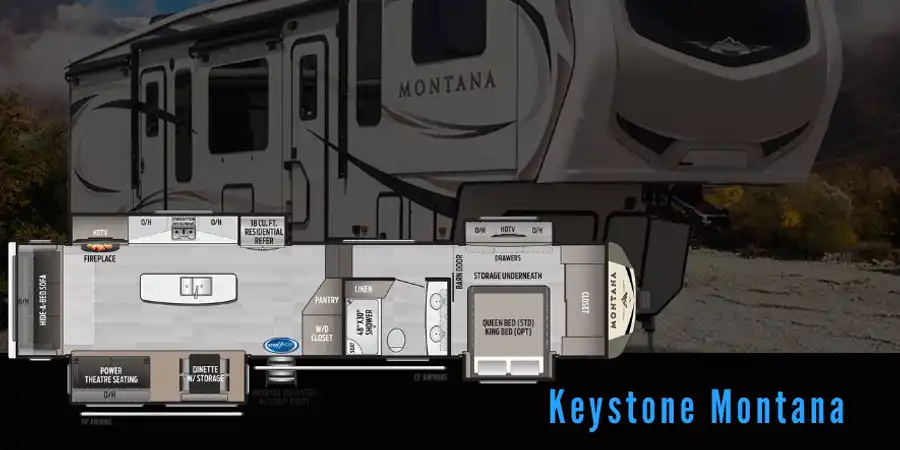
Overview:
The Montana luxury fifth-wheel trailer is so well put together that a Keystone employee spent all year living in one.
This vehicle has a nearly 15-year reputation of excellence and is a huge seller for Keystone.
In their experiment, the Keystone technician went to LaGrange, Indiana, where the temperatures often drop below zero. The technician would run the Montana’s test chamber at a chilly 0 degrees Fahrenheit.
Why?
Because they can.
They also ran the temperature at a much more habitable 72 degrees to see if the Montana could stand up to LaGrange’s variations.
Of course, the test was successful.
That’s because the Montana includes:
Key Features:
Pros
Cons
How to Winterise your RV
RV living is a feat of organization matter, especially during the winter.
Preparation is everything.
If you don’t prepare properly, extreme cold can burst your pipes and kill your batteries.
Even with the RVs with thermal packages installed, the extra insulation isn’t enough for those subjected to sub-zero temperatures.
It’s a challenging task, I know.
Don’t fret. This problem has a fix.
Skirting or packing a huge pile of snow around the RV bays will help keep the critical components warm.
Think of it as a makeshift Igloo slash RV.
Your bays, batteries, and plumbing will thank you later!
On another note, RV windows also lose heat – no matter how the manufacturers make you believe otherwise.
For this – you can use any of the following:
Add in thick thermal curtains for the final touch!
You might also want to apply caulk or sealant in every door and window of your RV to make sure it’s weather-proof.
Double-check your RVs weather stripping around these areas. Replace them if necessary, otherwise, it might be twice the job later on.
While skirting or packing your RV helps, you can also wrap your pipes and hoses in tape – and not just ordinary tapes but heat tape.
If you have money to spare – spruce it up with a heated RV water hose instead.
It’s an excellent investment!
To make sure you can troubleshoot minor issues along the way, you’ll need to prepare the following items:
Another issue is the HVAC system.
Just remember: Switch to using your RV’s furnace instead of the Heat pump whenever temperatures fall under 45 degrees.
You’ll increase the risks of burning your pump entirely if you force it to warm an already freezing RV.
Bad idea.
The furnace is quicker and more efficient!
If you want a cozy heated space, (safely) pack up plenty of propane.
If that’s still not enough for you hot people, either propane or electric space heaters could be an effective added support for the furnace.
They’re not too expensive and they’re very easy to use.
Another great investment.
Better than having to entirely replace your plumbing system after a bad freeze, don’t you think?
Make sure to also expose the back pipes to the heat by keeping your cabinet doors open.
Happy RV Living!
Useful Tips to RV in Winter
Here are our TopNotch Top Tips for RVing in the coldest months:
- Maintain your tank bay above freezing temperature.
- Don’t be cold AND wet. Use a dehumidifier to avoid mold growth inside your RV.
- Install vent covers; they’ll come in handy.
- Use antifreeze for RVs by flushing it down the toilets and drains.
- DON’T USE IT FOR YOUR FRESHWATER TANKS OR WATER HEATER!
- Always have tank heaters.
- Insulate your pipes as much as possible.
- Make sure your black tanks don’t freeze either and don’t dump them until they’re full or almost full.
Winter RV Living Checklist
You already know how to keep the RV warm. Now it’s time to make YOU stay warm too!
Here’s a list to make sure you don’t miss anything:
Frequently Asked Questions (FAQs)
At what temperature should you winterize your RV?
At 32 degrees Fahrenheit or below.
How many gallons of RV antifreeze Do I need to winterize?
2 or 3 gallons should be enough.
When should I de-winterize my RV?
Wait until after the last frost to de-winterize your RV.
Will pouring hot water down the drain unfreeze pipes?
Yes, just use salt water for better results.
Conclusion: Cold Weather Winterized RVs
And that’s about everything you need to know to make sure you enjoy the next winter snug and happy in your winterized RV.
It’s incredible what we can do and AVOID with some preparation and a bit of common sense.
What’s your favorite cold-weather RV?
I’m sure you have one in mind.
Stay cozy.
Stay safe.
And above all – have fun!

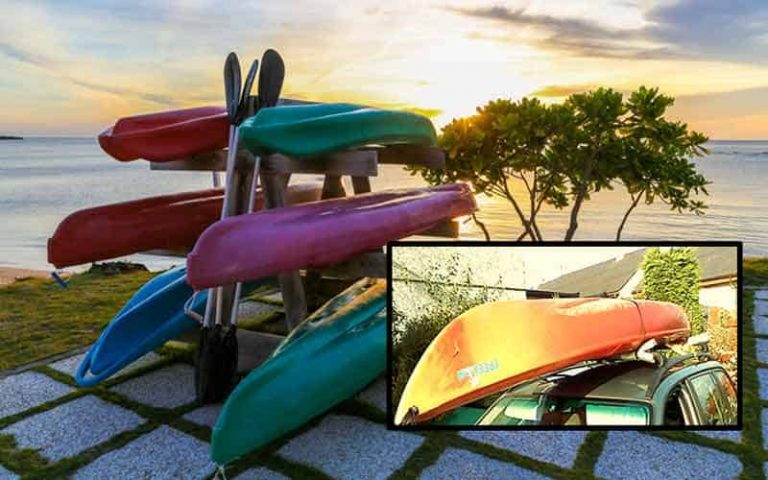
![17 Best Small Travel Trailers & Campers <br>On the Market For ([currentyear]) 17 Best Small Travel Trailers & Campers On the Market For (2024)](https://topnotchoutdoor.com/wp-content/uploads/2020/09/Travel-Trailers-FI-768x480.jpg)
![Kelly Blue Book For Trailers & RV<br>[RV Values] [currentyear] Kelly Blue Book For Trailers & RV[RV Values] 2024](https://topnotchoutdoor.com/wp-content/uploads/2021/01/Kelley-Blue-Book-RV-Trailors-FI-768x480.jpg)
![Average RV Costs [With 27 Examples] [currentyear] Average RV Costs [With 27 Examples] 2024](https://topnotchoutdoor.com/wp-content/uploads/2020/12/RV-Cost-FI-768x432.jpg)
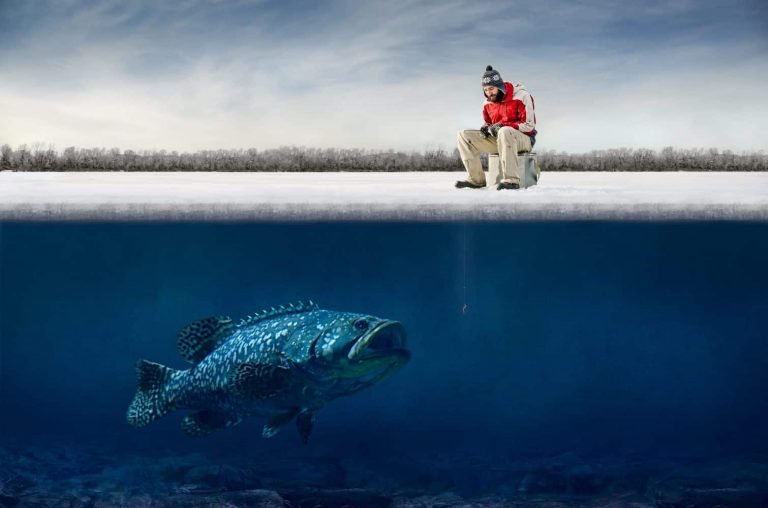
![13 Cheapest Camper Trailers ([currentyear]) Under $10,000 13 Cheapest Camper Trailers (2024) Under $10,000](https://topnotchoutdoor.com/wp-content/uploads/2020/12/13-Cheapest-Campers-FI-768x432.jpg)
